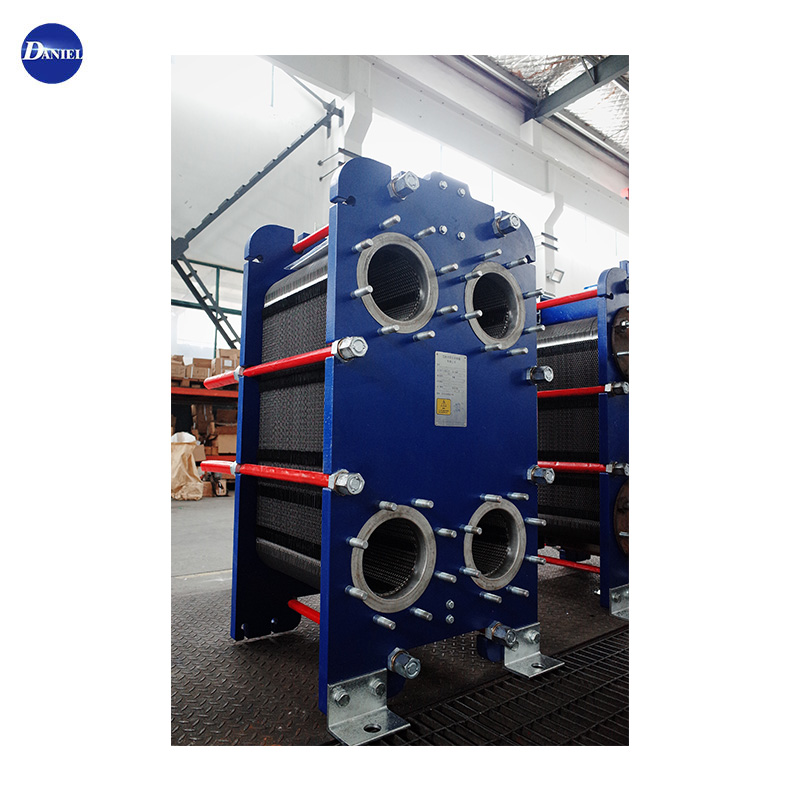Why Should You Choose a Plate Heat Exchanger for Your Industrial Needs?
2025-09-02
When it comes to efficient heat transfer solutions in modern industries, the Plate Heat Exchanger stands out as one of the most reliable, durable, and cost-effective technologies available today. From HVAC systems and food processing to petrochemical plants and power generation, plate heat exchangers offer unmatched versatility and performance. As global industries move toward higher efficiency and lower energy consumption, adopting the right type of Plate Heat Exchanger has become a vital step for any company seeking both sustainability and long-term operational savings.
At Jiangyin Daniel Cooler Co., Ltd., we have been committed to designing and manufacturing high-performance Plate Heat Exchangers tailored to meet the unique demands of our clients worldwide. With years of expertise and advanced engineering, our products are trusted in diverse applications that require precision, reliability, and efficiency.
What Is a Plate Heat Exchanger?
A Plate Heat Exchanger (PHE) is a device designed to transfer heat between two fluids without mixing them. Unlike traditional shell-and-tube exchangers, PHEs use a series of thin, corrugated plates that create channels for the fluids to flow through. These plates are clamped together in a frame, allowing for high heat transfer efficiency while maintaining a compact design.
The working principle relies on the counterflow or crossflow of fluids across these plates, maximizing the surface area for thermal exchange while minimizing pressure loss. This makes Plate Heat Exchangers an excellent choice in industries where space, energy efficiency, and maintenance costs matter.
Key Features and Parameters of Our Plate Heat Exchanger
To ensure clarity and professionalism, we summarize the major technical parameters of our Plate Heat Exchangers below.
General Features:
-
High thermal efficiency with compact size
-
Easy disassembly for cleaning and maintenance
-
Flexible design with customizable capacity
-
Suitable for heating, cooling, condensation, and evaporation processes
-
Long service life due to premium materials and engineering precision
Technical Parameters:
| Parameter | Specification Range |
|---|---|
| Heat Transfer Area | 0.5 m² to 2000 m² per unit |
| Design Pressure | Up to 25 bar |
| Design Temperature | -20°C to 180°C |
| Plate Material Options | Stainless Steel 304, 316L, Titanium, Hastelloy |
| Gasket Material Options | NBR, EPDM, Viton |
| Flow Rate | 0.1 m³/h to 2500 m³/h |
| Connection Size | DN25 to DN400 |
These specifications ensure that our Plate Heat Exchangers can be adapted to various industries, whether handling aggressive fluids, high temperatures, or specific hygiene requirements in food and pharmaceutical applications.
Benefits of Using a Plate Heat Exchanger
Choosing the right heat exchanger can have a direct impact on performance and operational costs. Here are the most important benefits of our Plate Heat Exchangers:
-
High Efficiency – Thin plates provide large surface areas for effective heat transfer, reducing energy consumption.
-
Compact Structure – Smaller footprint compared to shell-and-tube exchangers, saving valuable space.
-
Flexibility in Capacity – Adding or removing plates can easily adjust capacity without replacing the entire unit.
-
Ease of Maintenance – Quick disassembly allows easy inspection and cleaning, minimizing downtime.
-
Versatility – Applicable across multiple industries including chemical, pharmaceutical, food & beverage, power generation, and HVAC.
Applications of Plate Heat Exchangers
Our Plate Heat Exchangers are widely applied across industries that demand energy efficiency and reliability:
-
HVAC Systems – Heating, cooling, and heat recovery
-
Food & Beverage – Pasteurization, fermentation, and beverage cooling
-
Petrochemical Industry – Oil cooling, chemical heating, and condensation
-
Power Plants – Boiler feedwater preheating, cooling of lubricants, and district heating
-
Pharmaceuticals – Maintaining sterile environments and temperature control in sensitive processes
FAQ: Plate Heat Exchanger
Q1: What is the difference between a Plate Heat Exchanger and a Shell-and-Tube Heat Exchanger?
A1: A Plate Heat Exchanger uses multiple thin plates to maximize surface area for heat transfer, making it more efficient and compact compared to shell-and-tube designs. Shell-and-tube exchangers are typically larger, require more space, and are often less efficient for the same duty.
Q2: How do I choose the right Plate Heat Exchanger for my application?
A2: The selection depends on several factors such as the type of fluids, operating pressure, temperature, flow rate, and desired heat duty. At Jiangyin Daniel Cooler Co., Ltd., we offer professional technical support to analyze your requirements and recommend the most suitable model.
Q3: How often should a Plate Heat Exchanger be maintained?
A3: Maintenance intervals vary depending on the application and fluid quality. For clean water systems, annual maintenance may be sufficient, while more aggressive fluids may require more frequent inspection and gasket replacement. Regular monitoring ensures long-term performance.
Why Work with Jiangyin Daniel Cooler Co., Ltd.?
With extensive experience in manufacturing high-quality heat exchangers, Jiangyin Daniel Cooler Co., Ltd. offers more than just equipment—we provide tailored solutions. Our production facilities follow strict quality control standards, ensuring durability and superior performance. From initial consultation to after-sales service, we work closely with customers to meet technical specifications and operational needs.
By choosing our Plate Heat Exchanger, you benefit from:
-
Customized design solutions
-
High-performance materials for reliability
-
Competitive pricing with guaranteed quality
-
Global supply capability and timely delivery
-
Professional after-sales support
Contact Us
Are you ready to improve your system efficiency with a reliable Plate Heat Exchanger? Contact Jiangyin Daniel Cooler Co., Ltd. today for expert consultation and product solutions.
